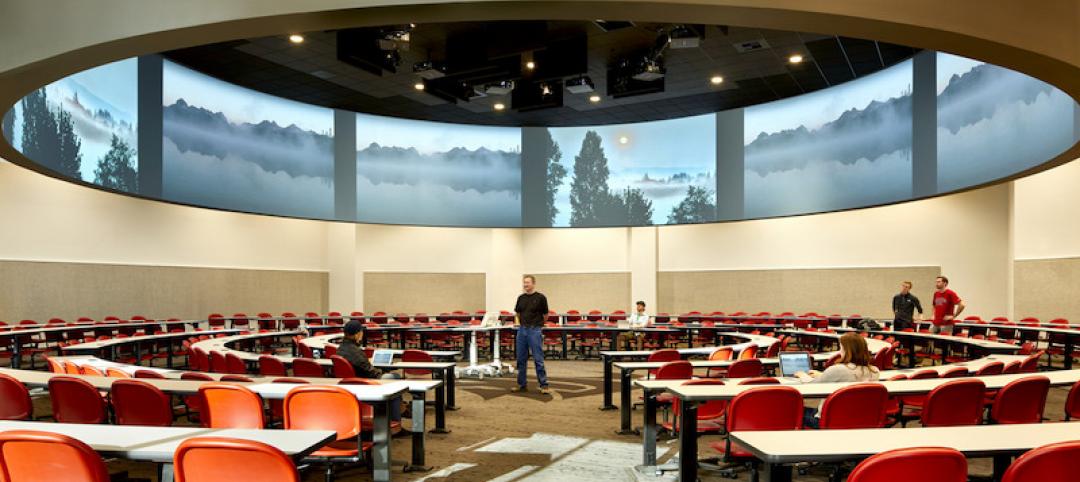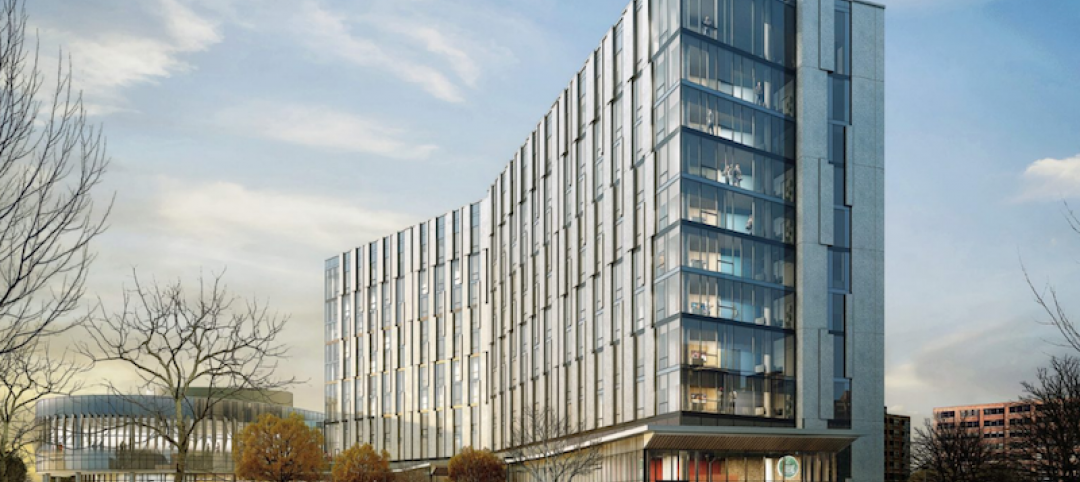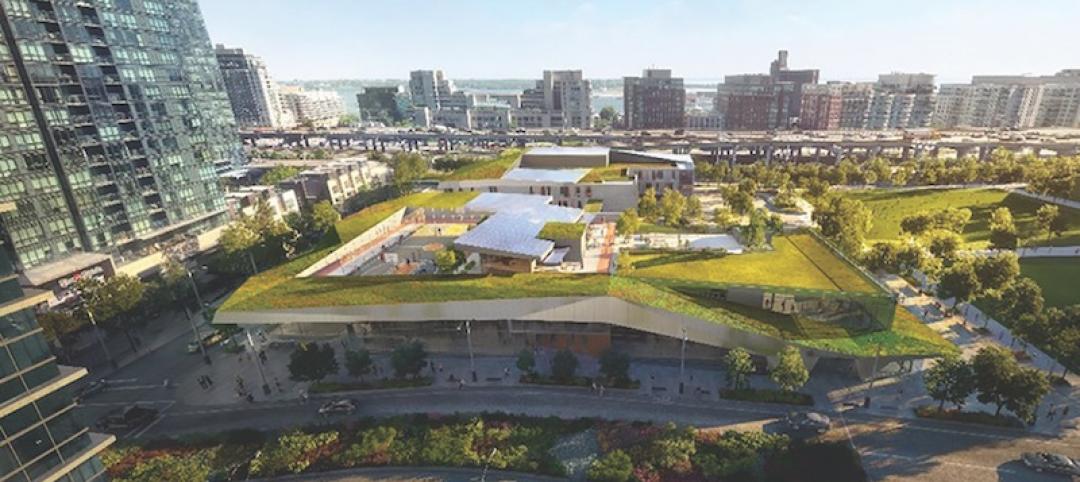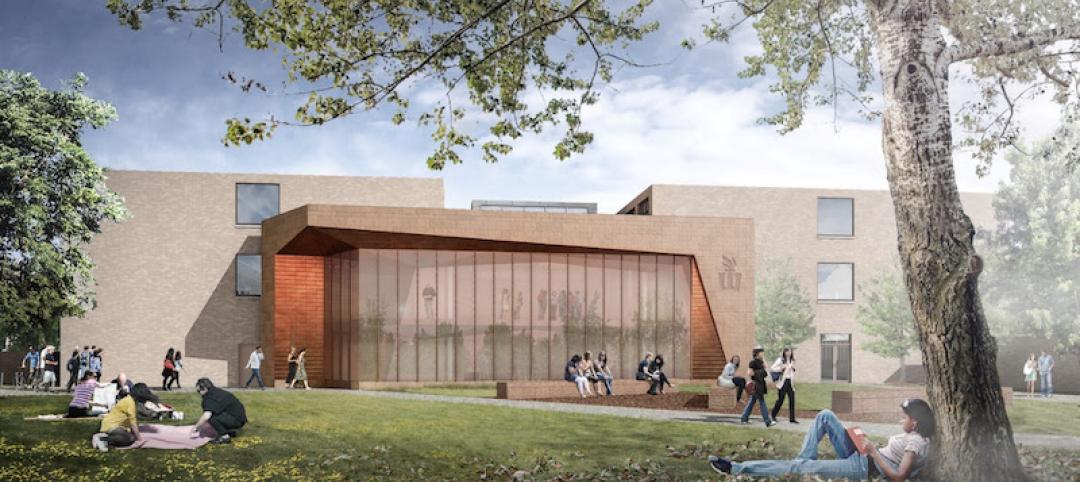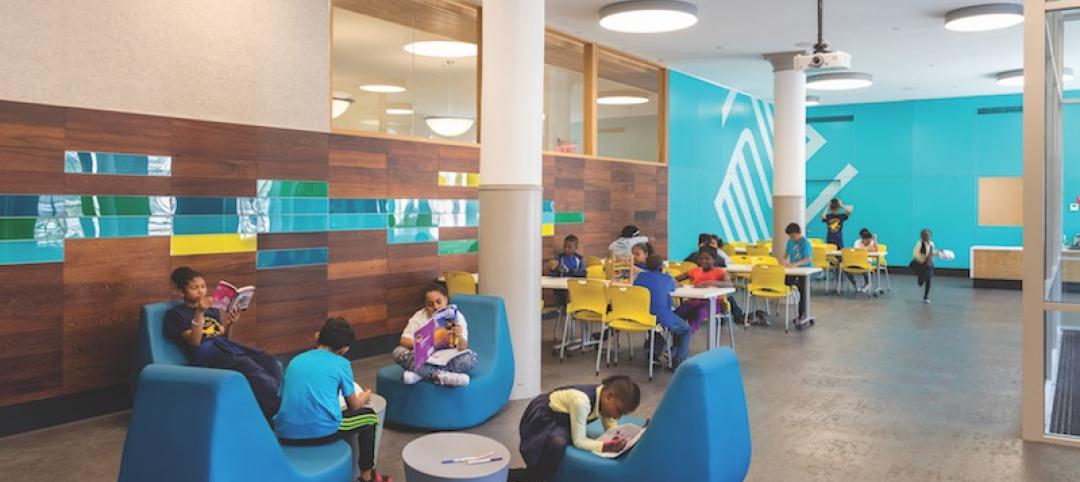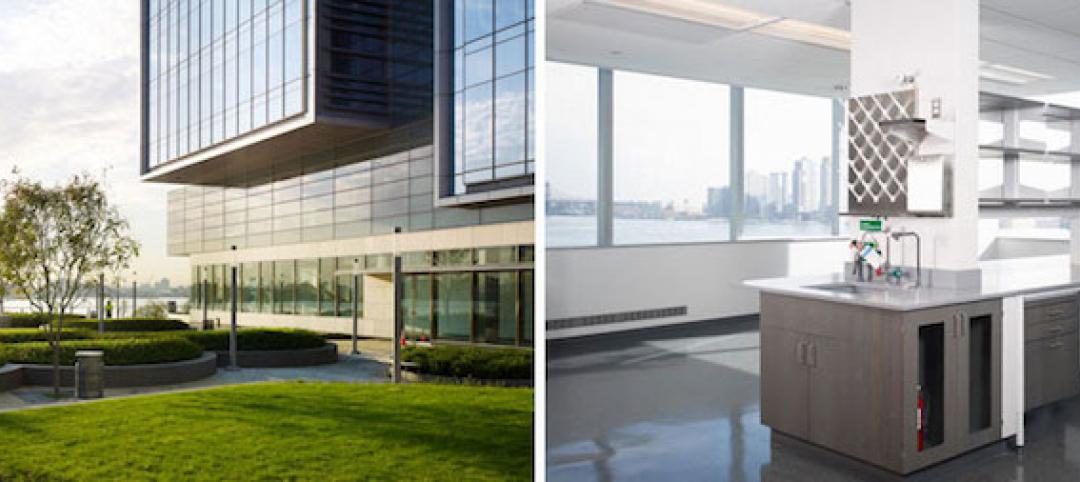The average age of the 84,000 public elementary and secondary schools in the U.S. is 44 years since construction, and 12 years since a major renovation, according to the Department of Education. School districts, say AEC experts, are more inclined than ever to tear down old schools and build new with the latest technological and security systems.
Older schools, with their small windows and rooms and creaky infrastructure, are tough and expensive to retrofit. That may explain why more school districts, when they choose to renovate, are preferring to adapt vacant buildings in their communities for reuse as modern schools.
And boy, are there a lot of vacant buildings out there. In the greater Washington, D.C., region alone, there’s over 70 million sf of unused office space. In Dallas, 30 million sf of offices sit empty, and 17 million sf in Phoenix. To say nothing of the hundreds of millions of retail square footage that e-commerce has rendered superfluous.
For example, last February, a former Kmart in Waukegan, Ill., became home to the 53,000-sf Cristo Rey St. Martin College Prep, an $18.5 million adaptive reuse project that JGMA designed and McShane Construction built, with 18 classrooms, three science labs, a cafeteria, library, and administrative offices for 400 students.
See Also: Making schools more secure is imperative, but how best to do that isn't settled yet
Adaptive reuse “is becoming a more established option for educational program space,” say the authors of a new white paper from Perkins Eastman, “Commercial Conversion: Adaptive Reuse, A Catalyst for Educational Innovation.” One reason is that schools are scrambling to keep pace with growing student populations. More than 31% of school sites include temporary buildings.
Culling from its own K-12 portfolio, Perkins Eastman provides case studies of creative adaptive reuse. In New York’s Chelsea neighborhood, Avenues: The World School of New York took a 215,000-sf, 1920s-era warehouse with 20,000-sf floor plates and converted it into a pre-K-12 school for 1,600 students. The building already had abundant windows on all four sides. But the classrooms had to be smaller than is typical because of the interior columns’ 20x20-foot spacing.
Other case studies—in New Jersey, Dallas, northern California, and northern Virginia—offer various adaptive scenarios, such as:
• a multitenant office tower where the school occupies the lower floors
• a former Verizon call center to which 30,000 sf was added over two floors for a private school for children and young adults with learning and behavioral disabilities
• a former corporate headquarters, whose deep, 120,000-sf floor plates are arranged around a series of atrium spaces, became the central organizing feature of a school.
In El Segundo, Calif., Balfour Beatty Construction Services recently completed the construction of a Gensler-designed project for the Wiseburn Unified School District and Da Vinci Schools, which converted a 330,000-sf former Northrup Grumman aerospace facility on 14 acres into three charter schools—collectively known as Wiseburn High School—on three floors with 72 classrooms and 210,000 sf above administrative offices.
David Herjeczki, AIA, LEED AP, a Design Director and Principal with Gensler, told the Daily Breeze newspaper that this $160 million project, which opened in December 2017 and serves 1,350 students, was the first of its kind to make it through the Division of State Architect approval process. The project came about after Wiseburn, a former K-8 district, won unification in 2014 and chose to partner with Da Vinci rather than build its own high school.
Herjecki explained that the idea was to build a nontraditional school whose learning environments reflect the professional world. Da Vinci Science, on the second floor, includes an engineering lab; Da Vinci Design, on the top floor, has a fabrication lab. Da Vinci Communications is located on the third floor.
Each of the three high schools has a retractable door that rolls up onto an outdoor patio. There are no corridors or lockers, and many of the walls are movable. The classrooms have rearrangeable desks, a science lab, and collaborative spaces. The building’s floor-to-ceiling windows offer transparency and views of the surrounding city.
A gym, soccer fields, and shared aquatics center were scheduled for completion this summer.
Related Stories
University Buildings | Jan 19, 2018
A 360-degree classroom highlights Washington State University’s new academic innovation hub
The circle-in-the-round classroom can accommodate 275 students.
University Buildings | Jan 18, 2018
New living/learning facility at the University of Illinois at Chicago breaks ground
Solomon Cordwell Buenz (SCB) designed the facility.
Education Facilities | Jan 9, 2018
Elementary school, daycare campus will serve Toronto's skyrise neighborhood
While the district’s vertical living lifestyle is geared for young singles and empty nesters, CityPlace has attracted a surprising number of families.
Education Facilities | Jan 8, 2018
Three former school buildings are repurposed to create mini-campus for teacher education
The $25.3 million project is currently under construction on the Winona State University campus.
Healthcare Facilities | Jan 6, 2018
A new precision dental center embodies Columbia University’s latest direction for oral medicine education
The facility, which nests at “the core” of the university’s Medical Center, relies heavily on technology and big data.
Education Facilities | Jan 2, 2018
New Bancroft Campus responds to the challenges of autism through design
The 80-acre campus is located in Mount Laurel, N.J.
K-12 Schools | Nov 16, 2017
Future-proofing higher education: Understanding generation Z
There are three driving issues behind this next generation: demographic change, behavioral change, and the power to choose.
Reconstruction Awards | Nov 13, 2017
Harlem Renaissance: A vacant school provides much-needed housing and a clubhouse for children
Word that PS 186 might be demolished brought out the preservationists, whose letter-writing campaign gained the support of the New York Landmarks Conservancy.
Education Facilities | Oct 3, 2017
The growing demand for early childhood education
When the design of early learning centers is grounded in the science of developmental psychology and education, these educational environments can address multiple domains of development that positively stimulate young children's physical and cognitive growth.
Laboratories | Sep 12, 2017
New York City is positioning itself as a life sciences hub
A new Transwestern report highlights favorable market and regulatory changes.



